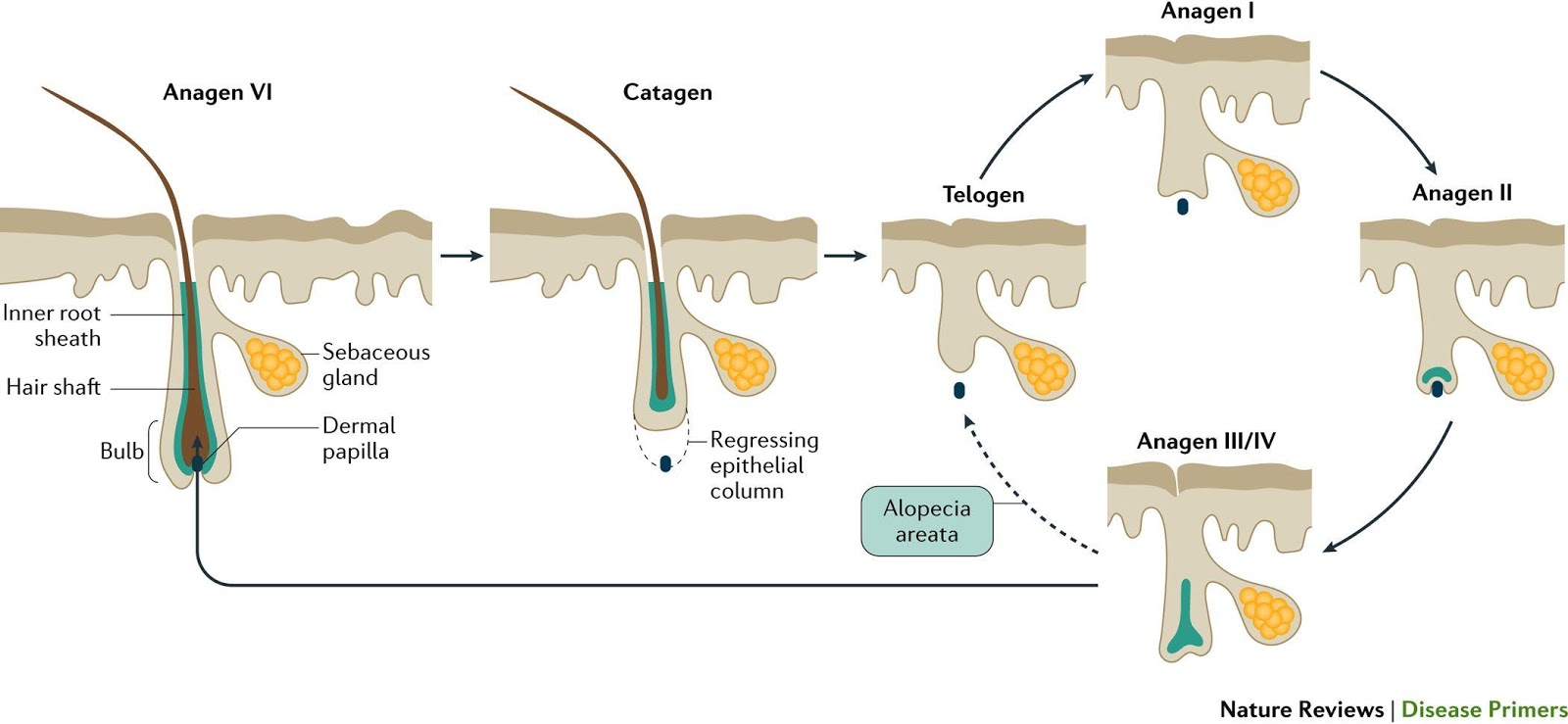
Alopecia Areata
Alopecia areata is an autoimmune condition that results in the destruction of your hair follicles by your body’s immune system attacking its hair follicles. The results leave a sudden loss of hair that has a smooth, and roundish bald patch. The patches can be a single area, or multiple patches can over time combine to cover an entire area. Locations can be anywhere on the body to include the scalp, eyebrows, eyelashes, beards or pubic region.
Alopecia areata is an autoimmune disorder characterized by transient, non-scarring hair loss and preservation of the hair follicle. Alopecia areata affects almost 2% of the general population within their lifetime. Studies have identified a lymphocytic infiltrate in and around the bulb or the lower part of the hair follicle in the anagen (hair growth) phase as part of the cause. Alopecia areata is a complex, polygenic disease that is still being further studied today.

DIAGNOSIS
Today, Alopecia Areata remains to have many questions on the exact cause, but a correlation for some individuals have been identified when a known stressful trigger can be associated with the onset of a fallout. Majority of the time, a physical exam is sufficient for a diagnosis, but some may indicate a biopsy if isolated, and other conditions are suspected in the differential diagnosis.
TREATMENT
Unfortunately, there is not a way of predicting if the Alopecia Areata will be temporary or permanent. Often, suffers from the condition will have the hair return within a year, but many develop permanent non-reversible loss. Treatment commonly incorporates a monthly corticosteroid injection to the scalp and early studies utilizing PRP therapy are showing promising results.
